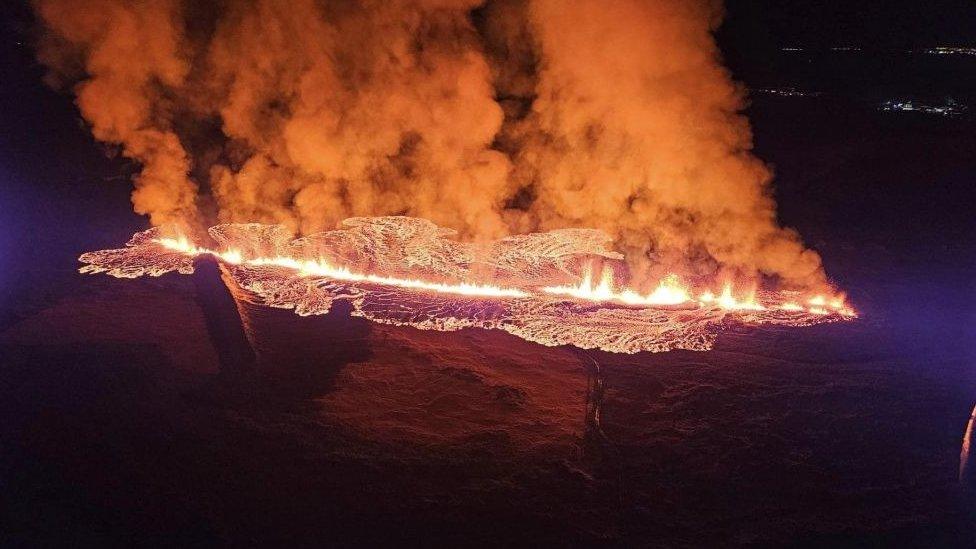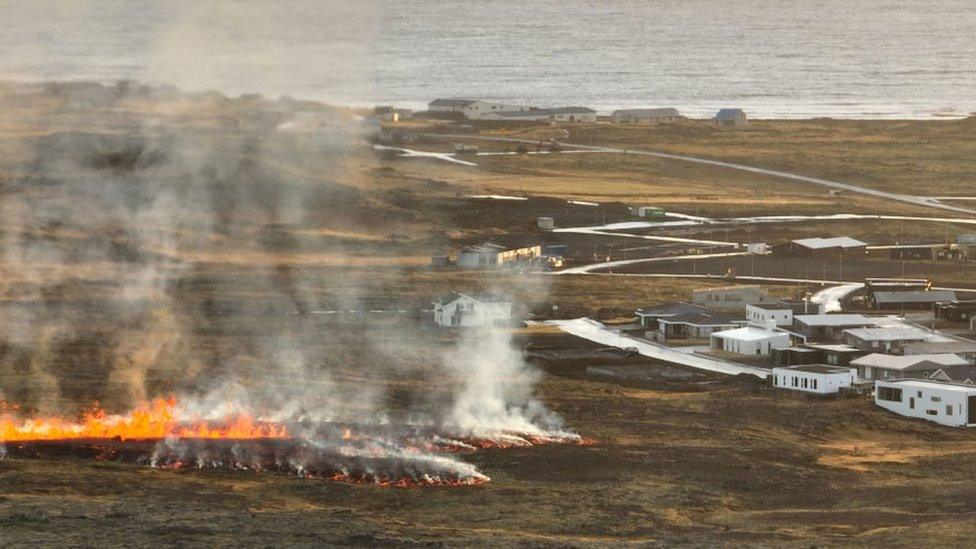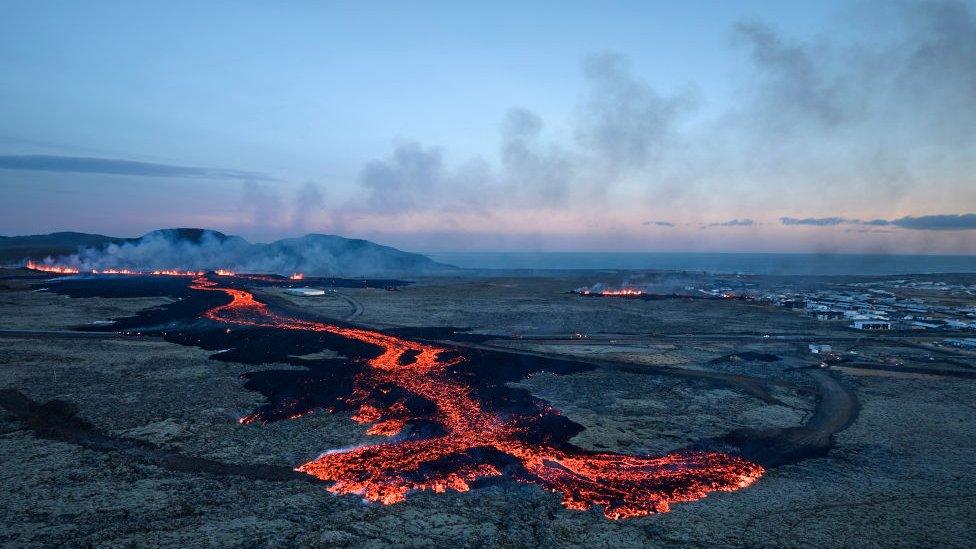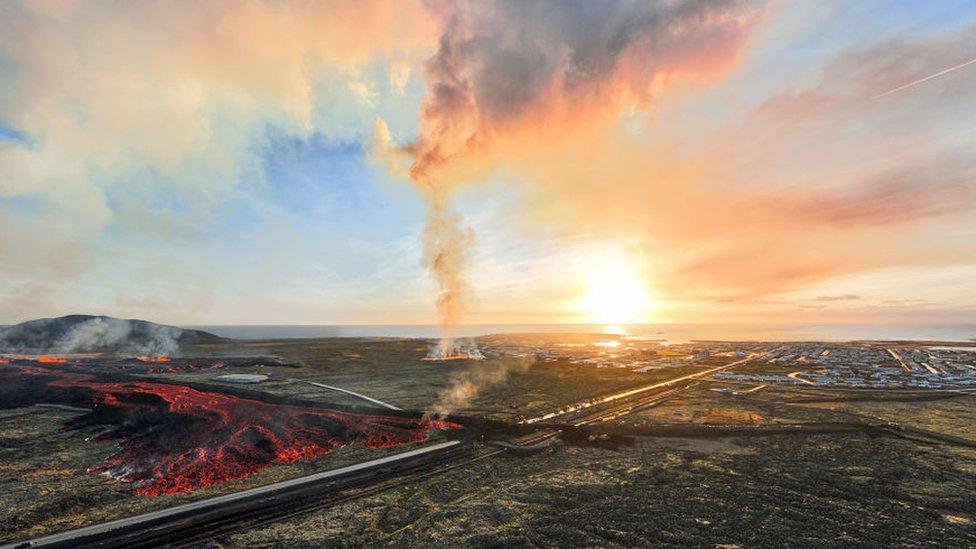Icelandic town of Grindavik evacuated again after further volcanic eruption
- Published
- comments

Magma rose up and spilled out of the Earth as lava, lighting up the ground at night time
People in Grindavik, in Iceland, were told to leave their homes at the weekend after a volcano erupted on the Reykjanes peninsular.
There's lots of volcanic activity in this area. Last month, people in the fishing town of Grindavik were told to leave because of another nearby eruption.
On Sunday magma rose up and burst through the ground as lava in two different places near Grindavik in south-west Iceland.
Everyone is safe as people were advised to leave the town in plenty of time, but lava has damaged buildings and set fire to some homes.
Prepared for eruption

Lava flowed towards Grindavik, the town on the right of this picture
After the last eruption in December, a large wall was built around the active volcano to help protect Grindavik from the lava flow of further eruptions.
However, when a volcano erupted on Sunday morning, some lava broke through the barrier and reached Grindavik.

Magma is super hot melted rock below ground, when it bursts through to the surface it is called lava
Iceland's President Gudni Johannesson asked people to "stand together and have compassion for those who cannot be in their homes".
The country's prime minister, Katrín Jakobsdóttir, said on Sunday: "Today is a black day for Grindavik and today is a black day for all of Iceland, but the sun will rise again."
It is not yet known when it will be safe for residents to return to their homes.
Volcanologist Robin Andrews said the lava was showing "no sign of slowing down".
Lava is extremely hot, molten rock. It can damage buildings and roads, and due to its intense heat can cause things to catch fire.

Molten lava has damaged one of the roads people use to get in and out of Grindavik
Why are there so many volcanoes in Iceland?
Iceland is very familiar with volcanic activity as it is located on a mostly underwater mountain range that stretches along the Atlantic Ocean's floor.
The country is shaped by the volcanic activity that happened there. The government warns people in Iceland before an eruption happens, so they can prepare.
Scientists can look at changes in the Earth's surface, or tremors in the ground, to predict where and when an eruption might happen.
The Big Question: Why do volcanoes actually erupt?
The Earth is made up of different plates, and when these move next to each other it creates geological activity.
Iceland sits on the boundary between two of the largest tectonic plates on the planet and has 33 active volcano systems.
Super hot molten rock, called magma, rises up from the Earth's mantle to create an eruption.
For a volcano to form, it usually involves one crust sinking beneath another, leading to a gap for magma to rise up through. Volcanoes can also form when two plates move away from each other.
